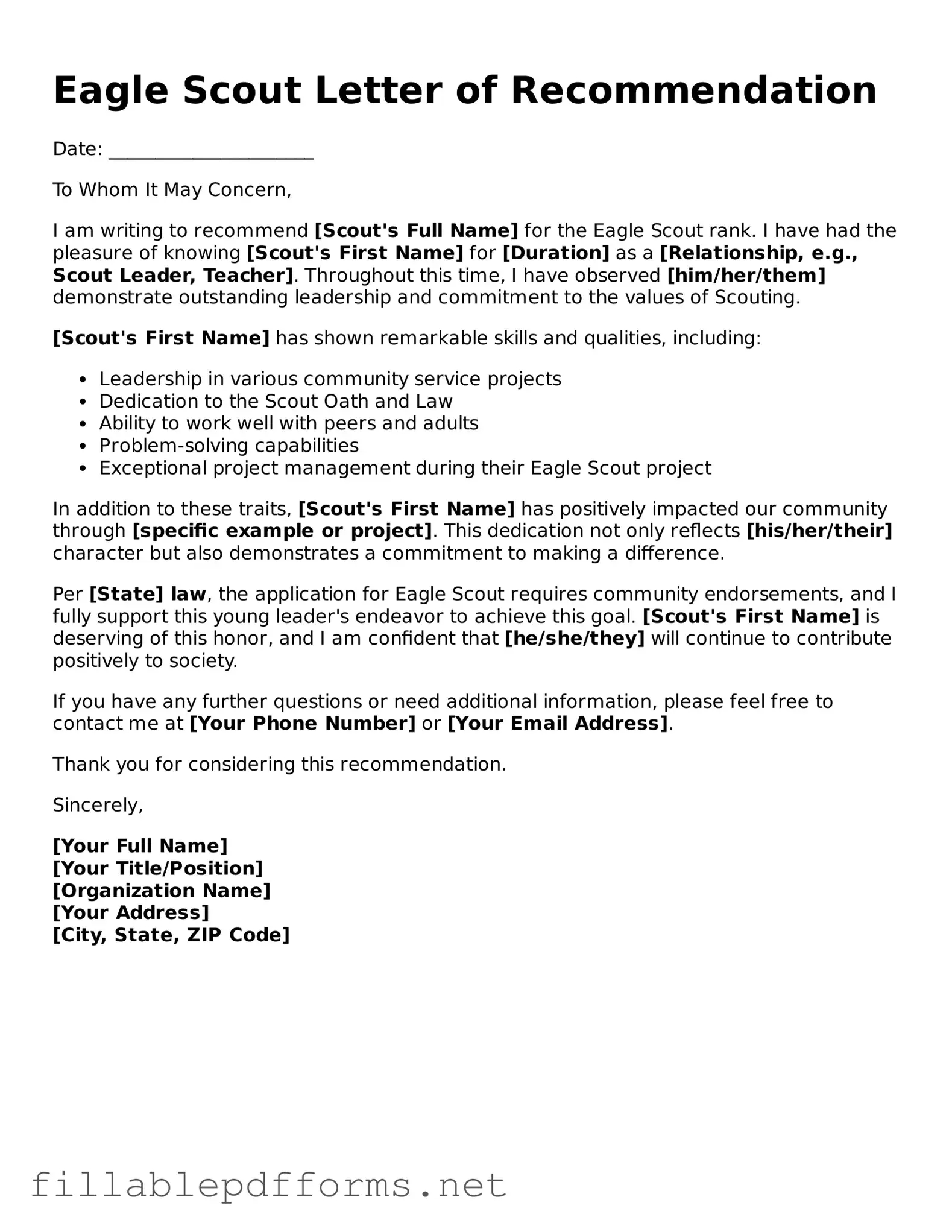Embarking on the journey to become an Eagle Scout is a significant milestone for many young individuals, representing not just personal achievement but also a commitment to community service and leadership. Central to this process is the Eagle Scout Letter of Recommendation form, a vital component that seeks to gather insights about the candidate from various perspectives. This form typically requires endorsements from several individuals who know the scout well, such as teachers, employers, or community leaders, and it serves to highlight the scout's character, accomplishments, and dedication to the principles of Scouting. Each recommendation provides an opportunity to illustrate the scout's strengths and contributions, shedding light on their ability to lead and serve. The form often includes specific prompts that guide recommenders in articulating their thoughts, ensuring that the letters are both meaningful and comprehensive. Ultimately, the Eagle Scout Letter of Recommendation form not only supports the application process but also reinforces the values of trust and integrity that are foundational to the Scouting movement.
